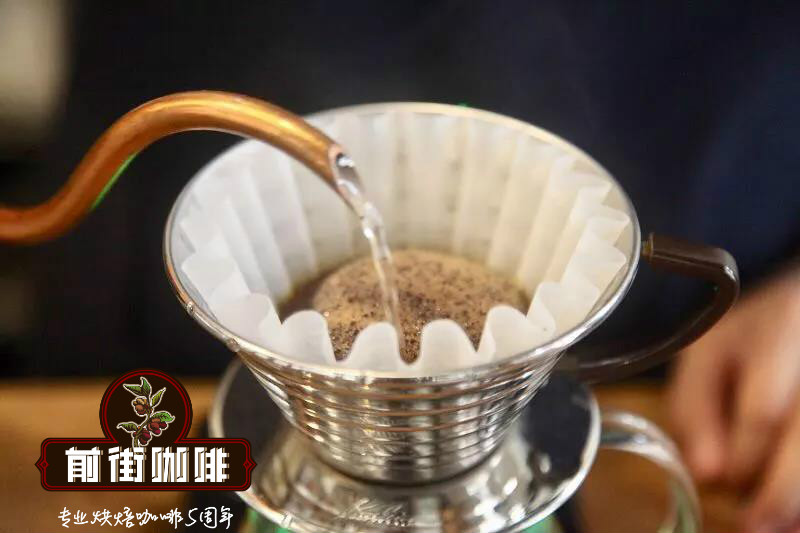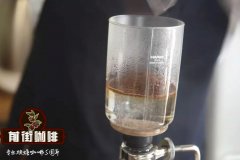Introduction of coffee flavor brewing parameters of Karatina manor in Neri, Kenya

Professional coffee knowledge exchange more coffee bean information please follow the coffee workshop (Wechat official account cafe_style)
Kenya Nyeri Ndaroini AA "Kenya" in East Africa is one of the major coffee producing countries. More than 6 million people in the country are engaged in the coffee industry, mostly in the form of a combination of small farmers and cooperatives. Coffee trees in Kenya are mostly planted at 1400 m-2000 m above sea level, and the growing areas include Ruiri, Thika, Kirinyaga and Mt. Kenya West, Nyeri, Kiambu and Muranga. Mainly in the foothills of Mt.Kenya and Aberdare. There are many producing areas in Kenya that strive to preserve the native forest ecosystem, protect the natural gene pool, and support the reproduction of wild coffee varieties.
Breed a variety of coffee trees. In 1930, the unique Kenyan varieties SL28 and SL34, which were cultivated and named by the "Scott Laboratories" laboratory, were born in such a good environment. According to botanists in the SL laboratory, SL28 and SL34 are genetic variants. Among them, SL28 has a mixed pedigree of French missionaries, mochas and Yemens Tibica.
The goal of cultivating SL28 was to mass produce coffee beans with high quality and resistance to diseases and insect pests. Although the yield of SL28 was not as high as expected the copper leaf color and broad bean-shaped beans have great sweetness balance and complex flavor as well as significant citrus and black plum characteristics. SL34 is similar to SL28 in flavor, with a heavier, fuller and cleaner finish than SL28, except for the complex acidity and great sweetness of the finish.
SL34 has French missionaries, bourbon, and more Tibica ancestry. Dou looks similar to SL28, but is more adaptable to sudden heavy rain. It is these two important varieties that lead us to the unique Kenyan style: strong acidity, rich taste and beautiful balance.
Last year, we actually started our own red cherry project with our Kenyan partners. This project in Kenya includes not only the quality control of raw bean harvesting, but also the manual selection process before export. We have paid to improve the homework of these processes last year, and have achieved preliminary results, but it is far below the standard we expected. The first step we discuss with our production partners is the harvest procedure for fully ripe red cherries. As Kenya's production is still dominated by the smallholder system, educating small farmers and providing incentives is the first key factor to improve quality and the cornerstone of the virtuous cycle of the industry as a whole. In the attached photo, we can also see that the cherries submitted by the project members are inspected at the cherry collection point of the processing plant and the substandard cherries are manually sorted out again. Another photo shows us discussing the cherry maturity color with small farmers. Another procedure is the last stage of the procedure before export after processing shell beans. We have done a manual selection procedure with exporters to increase prices twice. In fact, we started this step last year, but our Kenyan partners do not seem to fully understand our high standards. This year, we will do further calibration and discussion on the basis of last year. Because this kind of operation procedure is more tedious, no matter it is TOP series or FAQ series, the supply is relatively limited.
END
Important Notice :
前街咖啡 FrontStreet Coffee has moved to new addredd:
FrontStreet Coffee Address: 315,Donghua East Road,GuangZhou
Tel:020 38364473
- Prev

What is Panamanian cuckoo coffee? Introduction to the brewing flavor of long-tailed cuckoo coffee in Hartman Manor
Professional coffee knowledge exchange more coffee bean information please follow the coffee workshop (Wechat official account cafe_style) Hartman Manor is a coffee farm jointly run by the Hartmann family, the founder of the estate is Alois Strasil Hartmann, came to Boquete District of Panama around 1918 to start his planting business, Hartman Manor currently has two coffee farmers
- Next

Is the coffee good at Carmen Manor in Panama? What are the flavor characteristics of Carmen Manor coffee in Panama?
Professional coffee knowledge exchange more coffee bean information Please follow the coffee workshop (Wechat official account cafe_style) Carmen Manor (Carmen Estate) has been producing and exporting high-quality Arabica coffee for 50 years. Carlos Aguilera is the third generation of landowners. The estate and processing plant were founded by grandparents Efrain and Carmen Franceschi in 1960. Fran
Related
- Does Rose Summer choose Blue, Green or Red? Detailed explanation of Rose Summer Coffee plots and Classification in Panamanian Jade Manor
- What is the difference between the origin, producing area, processing plant, cooperative and manor of coffee beans?
- How fine does the espresso powder fit? how to grind the espresso?
- Sca coffee roasting degree color card coffee roasting degree 8 roasting color values what do you mean?
- The practice of lattes: how to make lattes at home
- Introduction to Indonesian Fine Coffee beans-- Java Coffee producing area of Indonesian Arabica Coffee
- How much will the flavor of light and medium roasted rose summer be expressed? What baking level is rose summer suitable for?
- Introduction to the characteristics of washing, sun-drying or wet-planing coffee commonly used in Mantenin, Indonesia
- Price characteristics of Arabica Coffee Bean Starbucks introduction to Manning Coffee Bean Taste producing area Variety Manor
- What is the authentic Yega flavor? What are the flavor characteristics of the really excellent Yejasuffi coffee beans?

